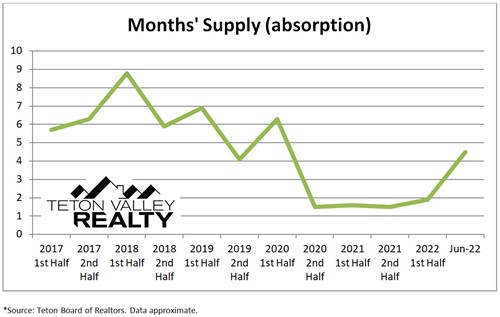Increasing Supply
As the fed continues it's path to tamp inflation with interest rate hikes, real estate markets across the country are beginning to feel pressure as markets cool. A fundamental measure of any real estate market is supply and demand. While it is difficult to calculate historic absorption (the number of months supply at any given time) we were able to prepare a graph that depicts the approximate absorption since 2017, feel free to check out market reports from our seasonal magazine archives, HERE. The National Association of Realtors suggests that a normal supply of inventory is somewhere around 6 months worth of supply. The trend in Teton Valley follows that "normal" trajectory right up until the pandemic as inventory drops significantly, to just over one month's supply. However, the past 30 days saw inventory increase to 4.5 months worth of supply. In addition, the market is seeing price reductions for the first time since the pandemic, following suit with most real estate markets.
What does it mean?


The inventory of homes is still low, and the median sales price over the past 30 days at the time of this article was a whopping $1,000,000. Part of that is likely a result of first-time home buyers being driven from the market as rates increase, pushing that median towards the luxury home sector. Supply for new homes has been kept at bay as a result of high construction costs as labor and materials skyrocketed over the past years. New supply will likely come in the way of some new construction, but also turnover from these high sales years. As interest rates continue to put pressure on some buyers, and inventory rises, most expect continued normalization, and hopefully, stabilization.

